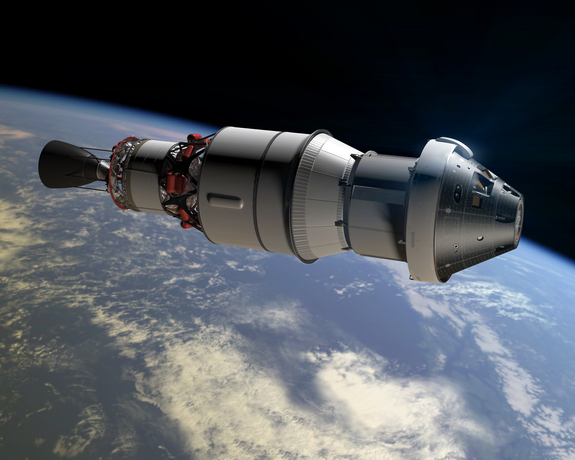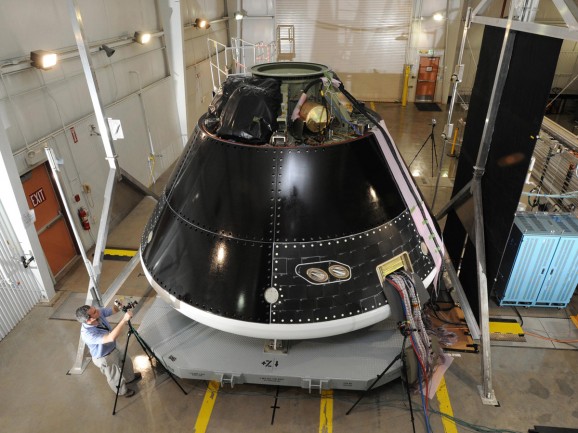NASA Prepares Orion For Unmanned Flight Tests
 Despite the government shutdown, NASA was able to continue working on the Orion, NASA’s next manned spacecraft. Before any humans step aboard the ship sometimes referred to as “Apollo on steroids,” the space agency will continue working on the ship in preparation for its debut test flight in September of next year.
Despite the government shutdown, NASA was able to continue working on the Orion, NASA’s next manned spacecraft. Before any humans step aboard the ship sometimes referred to as “Apollo on steroids,” the space agency will continue working on the ship in preparation for its debut test flight in September of next year.
Next fall, a Delta IV heavy rocket will launch the Lockheed Martin-designed Orion capsule from the Cape Canaveral Air Force Station. The Exploration Flight Test is designed to assess a number of critical functions, including the capsule’s heat shield, which will be tested as it plunges into Earth’s fiery atmosphere at speeds of 20,000 mph. Orion’s heat shield, like Apollo’s features “Avcoat,” which essentially removes the heat of reentry and stores it in a honeycomb matrix. This latest model will be the largest in the world, roughly 17 feet across. The flight will also test other structural components of the craft, as well as avionics and software. Ideally the results will allow developers to assess risks and ways to mitigate them.
Despite its comparisons to the Apollo spacecraft, Orion’s designers are quick to point out that while the spacecraft may be similar in shape, we’re talking about a different beast. The form has stayed the same because it minimizes risks caused by the intense heat of re-entry. Orion’s about 30 percent bigger than Apollo, and also has very different, modern computer systems. It’s got “a million lines of software code,” says Lockheed Martin Orion deputy program manager Larry Price. By the time its ready to transport humans into space it will likely have a million more. Orion also has failure detection systems and the ability to reroute itself via a series of thrusters that automatically re-balance the craft. Price believes it’s safer and much more reliable than the Apollo craft.
 September’s test flight will send Orion roughly 3,600 miles from Earth. Another unmanned mission is already scheduled for 2017, which would use NASA’s Space Launch System mega-rocket. If all goes according to plan, the Orion capsule will eventually take humans deeper into space than ever before, including to the moon, asteroids, and Mars.
September’s test flight will send Orion roughly 3,600 miles from Earth. Another unmanned mission is already scheduled for 2017, which would use NASA’s Space Launch System mega-rocket. If all goes according to plan, the Orion capsule will eventually take humans deeper into space than ever before, including to the moon, asteroids, and Mars.
Orion is also NASA’s first new spaceship since the 1970s. The agency’s long-range plan is to rely on private companies to provide transportation to low-Earth orbit and the ISS so it can focus on missions to deep space. It seems that Orion is currently humanity’s best chance at boldly going where no man has gone before.












